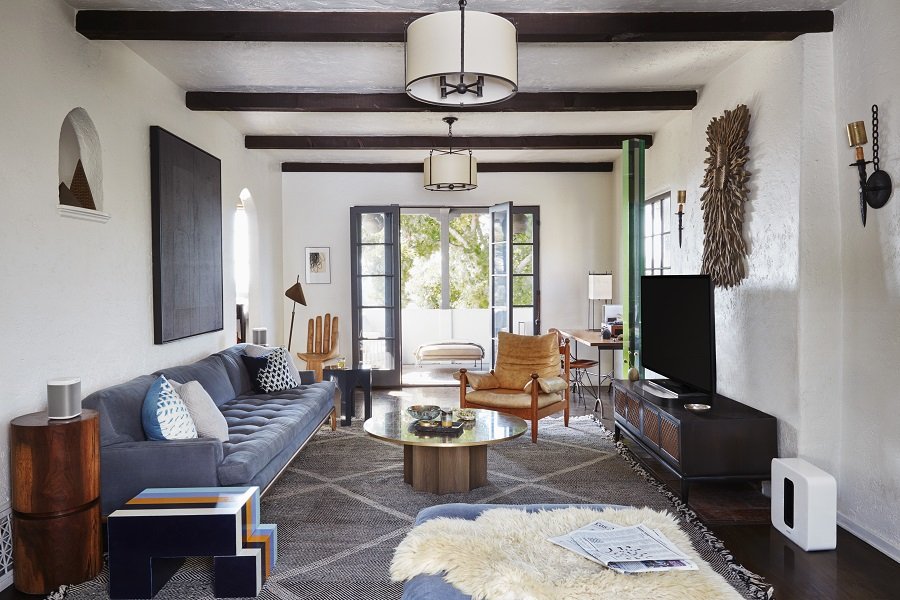WHAT YOU NEED TO KNOW WHEN BUILDING A MULTI-ROOM AUDIO SYSTEM
Each time we add a multi-room audio system to one of our client’s homes, we customize it to their specific needs and preferences. Very few people enjoy music in the same way. Easy access may be a priority for everyone, but where, how and what they listen to will vary. Realizing exactly what you need is the first step to getting a successful multi-room audio system at your home in the Bellaire, Texas area.
As you read this blog, consider the answers to all of the following questions. Let the experts at Unlimited Integration then take your feedback to create a custom solution for your space. Likely your answers will affect the wiring, speakers, amplifiers, and other components needed.
SEE MORE: Stealth Acoustics Invisible Speakers: Perfect for Multi-Room Audio
WHERE DO YOU WANT TO LISTEN TO MUSIC?
The first step in any multi-room audio system is laying the wiring foundation for all your speakers. Having a general idea of where you want to listen to music will help us figure out where this wiring should go. Extend your system to your entire home, including outdoor patios and backyards, or choose to only have speakers in entertainment spaces like a home theater or family room.
HOW DO YOU TYPICALLY LISTEN TO MUSIC?
It’s also important to know how you want to listen to music. Are you interested in having background music when you host friends, or do you want a dedicated listening room to sit down with your favorite albums? Speaker layouts and their respective wiring differs significantly between background audio, surround sound, and 2-channel systems. The goal is to optimize each room according to how you'll use it, instead of using the same layouts and wiring throughout the house.
This will also affect the speakers you use. For 2-channel setups, you want high-end loudspeakers like Meridian's Reference line. For surround sound applications, make sure you use Dolby Atmos-enabled speakers and an Atmos-ready A/V receiver to get genuinely immersive sound in your home theater or media room.
WHAT KIND OF MUSIC SOURCES DO YOU USE?
One of the most significant benefits of a professional multi-room audio installation is having a dedicated A/V rack. All devices stay hidden away instead of taking up space in individual rooms— except for amps or turntables that some music lovers might want to have handy. Knowing which receivers, amplifiers, CD players, or music streamers you want to use is still an essential part of your installation, though.
We need to make sure we have the necessary rack space for all of them. Some also come with unique cabling requirements. For example, if you plan on using wireless sound systems from Sonos, we’ll need to ensure you have a strong networking backbone in those areas as well.
WHAT ARE YOUR STYLISTIC PREFERENCES?
When choosing speakers for your multi-room audio system, aesthetics are just as important as performance. If you don’t want equipment cluttering up your home, take advantage of in-ceiling and in-wall models. A variety of high-end audio manufacturers including Sonance and Meridian offer speakers that blend in perfectly with their surroundings. All without sacrificing any of the sound quality.
WHAT CONTROL SOLUTION DO YOU WANT?
The last step is figuring out how you want to access your system. Through our Control4 or Savant multi-room audio solutions, it’s easy for you to pull up your favorite artists and albums. The definition of easy may vary from family to family which is why our control options vary as well. Choose between handheld remotes, dedicated touchpads, mobile apps, or even voice commands.
The first step to transforming your lifestyle is filling your home with sound. And there’s no better way to do that than with a custom multi-room audio solution from Unlimited Integration.
To learn more about our services or set up a consultation, call us at 832.857.0080 or fill out our online contact form.
on Thursday, 27 December 2018.

